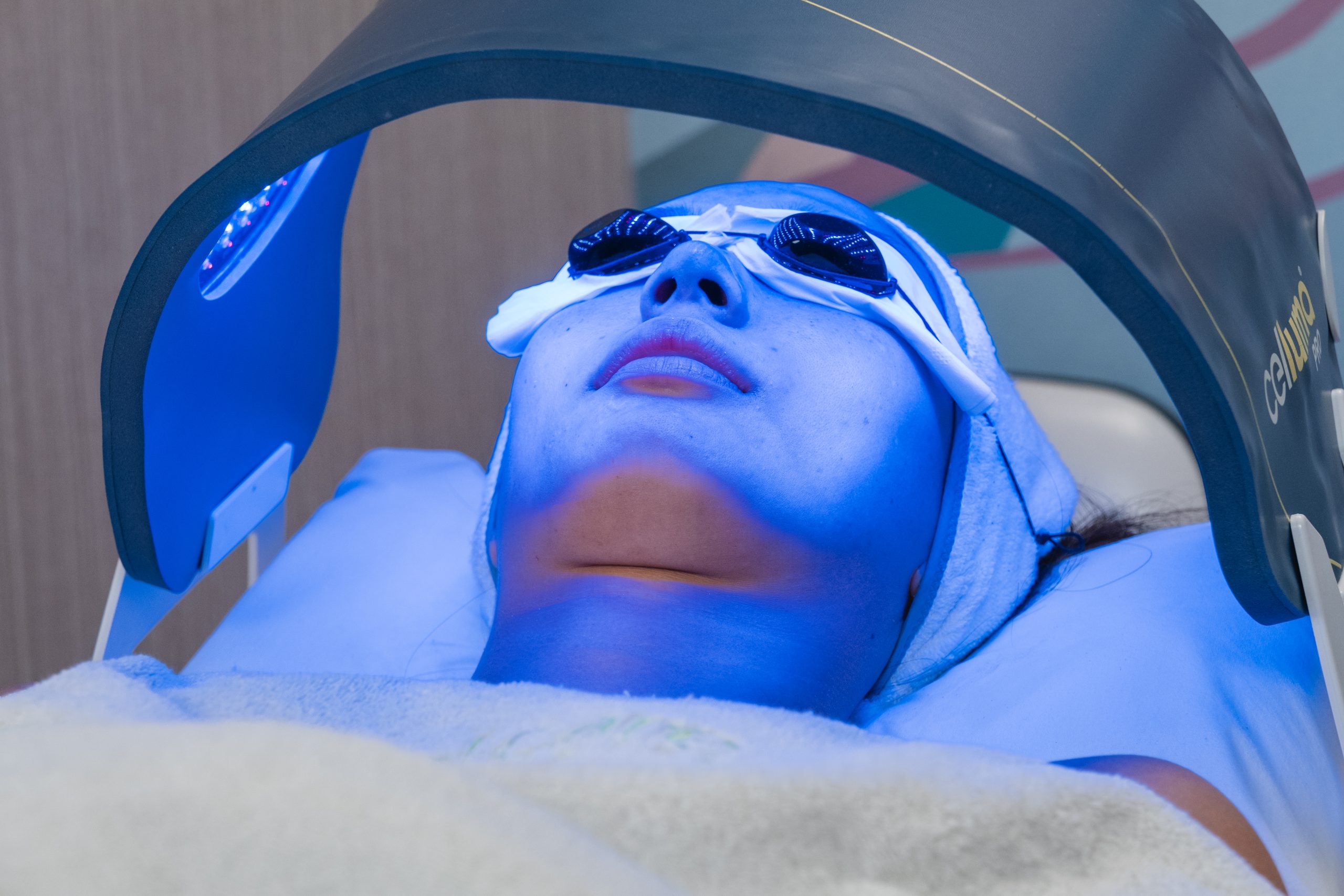
Acne affects people of all ages, but not every treatment is right for every skin type. For patients who don’t want to take oral antibiotics or apply drying topical medications, blue light therapy offers a non-invasive alternative. Clinics offering blue light therapy in Orlando are experiencing a growing interest, particularly among individuals seeking to treat mild to moderate acne with fewer side effects.
To determine if this therapy is the right option, it is helpful to consider how it works, who it benefits most, and how it compares to other treatments, such as laser-based procedures.
How blue light therapy works
Blue light therapy uses visible light at a specific wavelength to treat acne. The light penetrates the upper layer of the skin and targets Cutibacterium acnes (formerly known as Propionibacterium acnes), the bacteria responsible for triggering inflammation in acne.
When exposed to this light, the bacteria react by producing oxygen molecules that break down their cell walls. This reaction kills the bacteria, preventing new breakouts and reducing the size of existing blemishes. Blue light may also reduce oil production slightly, which helps limit clogged pores.
The treatment is non-thermal, meaning it doesn’t rely on heat to achieve results. Sessions usually last 15 to 30 minutes and are painless.
Who responds well to blue light therapy?
Blue light therapy Orlando is most effective for patients with inflammatory acne, such as papules and pustules. It works best for people with active breakouts who want to reduce redness, swelling, and bacteria without using topical antibiotics or benzoyl peroxide, which can dry or irritate the skin.
It may be beneficial for individuals who prefer non-pharmaceutical options or who have had side effects from traditional acne medications. Patients who follow a consistent skincare routine, combined with blue light sessions, tend to achieve longer-lasting results.
This therapy, however, is not a one-size-fits-all solution. Blue light does not work well for blackheads, deep cystic acne, or severe scarring. For these issues, dermatologists may recommend alternative options, including chemical peels, oral medications, or energy-based treatments.
What happens during a session
Before treatment begins, the provider cleanses the skin and offers protective eyewear. The light source is positioned over the treatment area, commonly the face, back, or chest, and left in place for 15 to 30 minutes.
During the session, patients may feel a mild warmth but no pain. Afterward, the skin might appear slightly red or flushed, but this typically fades within an hour. There is no peeling or skin shedding, unlike more aggressive treatments. Most people return to work or other activities immediately after treatment.
How it compares to laser-based treatments
Blue light therapy is sometimes confused with laser treatments, but the two differ significantly in function. Blue light targets bacteria at the skin’s surface using low-intensity, visible light. It treats inflammation and breakouts without affecting skin texture or pigmentation.
Laser treatments, on the other hand, use focused beams of high-intensity light to reach deeper layers of the skin. These procedures are commonly used to address issues such as discoloration, sun damage, or scarring.
For example, a typical laser pigmentation removal Orlando breaks apart excess melanin in the skin. Lasers, such as Q-switched Nd: YAG or fractional lasers, treat dark spots, melasma, or uneven tone by targeting pigment at various depths. This treatment is effective for patients with post-inflammatory hyperpigmentation (PIH) after acne has cleared.
While blue light helps prevent acne from forming, laser pigmentation removal addresses the marks acne may leave behind.
What patients should know before starting
- Patients interested in blue light therapy should avoid sun exposure and tanning beds in the days before treatment.
- Sunburned or irritated skin can make the session uncomfortable and may interfere with results.
- People using retinoids or other active topicals should speak with their provider about pausing those products to prevent additional sensitivity.
- Photosensitive individuals and those taking medications that increase light sensitivity, such as certain antibiotics or diuretics, should not undergo this treatment.
Blue light therapy is safe for most skin types, but it’s important to be realistic about results. It’s not a cure for acne but can significantly reduce inflammation and bacterial activity when used consistently.
Final thoughts
Blue light therapy in Orlando offers a low-risk, non-invasive solution for patients with mild to moderate inflammatory acne. It works by reducing acne-causing bacteria and calming inflammation, eliminating the need for oral medications or harsh topical treatments.
For those dealing with post-acne pigmentation or sun damage, laser pigmentation removal in Orlando may be the better choice. Laser treatments target deeper issues that blue light therapy can’t reach, including dark spots and uneven skin tone. When used together or as part of a broader treatment plan, blue light and laser therapy can help patients achieve clearer skin and a more even complexion.